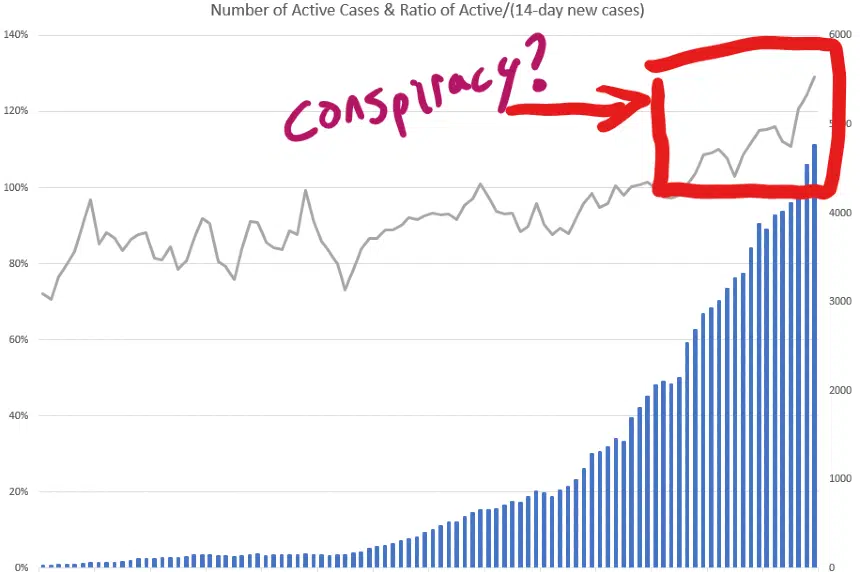Saskatchewan’s active COVID-19 caseload may be deceiving when looking at where Saskatchewan is with the pandemic.
A thread posted to Twitter on Monday outlined some of the issues in Saskatchewan’s large caseload.
Saskatchewan's missing recoveries? – A COVID Conspiracy debunked before the crazies get to it.
Arm yourself with information, friends. SK’s active cases are higher than what’s being reported & I’ll tell you why it’s a sign of health system overload, not a nefarious plot. pic.twitter.com/yJJhJhGPwK
— Kyle Anderson (@DrKyle) December 7, 2020
The man behind the thread, Kyle Anderson, is an assistant professor at the University of Saskatchewan.
Anderson was able to share some additional thoughts on his findings with 650 CKOM on Tuesday.
“Any measurements that we do are prone to a bit of error, depending on lag or how accurately we can measure things. One of those metrics that we’re constantly looking at is active cases and recoveries,” he explains.
“Our active case number is something that, if we aren’t monitoring recoveries as promptly as we possibly could, that’s going to sort of trend to get a little larger and a little larger. There’s this backlog of people that public health hasn’t been able to contact.”
As of Monday, Saskatchewan had 4,763 active cases being reported.
The active case count is a simple formula, taking the total number of cases within the province and subtracting the total numbers of recoveries and deaths.
When asked about a possible drastic change in the province’s active case count, the Ministry of Health provided its disclaimer, which is shown as a footnote on its online dashboard:
“There may be more recovered cases yet to be reported to Public Health,” it reads.
On Sunday, a large chunk of COVID cases was slashed from Manitoba’s active caseload. Our neighbours to the east went from more than 9,000 active cases Saturday to more than 5,600 Sunday.
Anderson said he wants to dispel any myths that the cases are inflated, but rather indicate a data and human resource issue.
“When people see a big jump like that, they may suddenly think there’s something wrong with those numbers … I want to try and get ahead of that for Saskatchewan and say, ‘Yes, right now, we probably have about 1,000 more recoveries that we haven’t counted yet.’ But when those recoveries hit the system, it isn’t anything nefarious, it’s not people trying to pump up the numbers,” he said.
“There’s probably going to be one day where they decide, ‘Any case that is more than three weeks old that hasn’t gone to the doctor or gone to the hospital, we might just assume that all of those people beyond a certain date have recovered now.’ ”
Anderson said the active cases could drop as a phased-in approach or within a large batch.
“This is just cleaning up the data and making sure (the) records are active,” he said.











